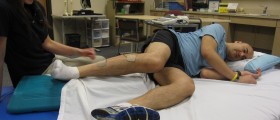
Introduction to pain
Pain is sent to the brain by the sensory neurons. Pain is a sensation, but there is also the physical awareness of pain to take into consideration, which includes perception and subjective interpretation of the discomfort being caused.
Perception is what give the pain its location, intensity and various unconscious responses, including emotional ones, can define the over concept of pain.
Pain is a result of several different factors. Injury is one of the most common causes of pain, but it can also occur from illness. Depress or other psychological problems can also cause pain or be triggers for pain. Types of pain
Acute pain is pain that results from damaged tissue, like when skin is burned or a bone is broken. Headaches are a good example of acute pain. This type of pain goes away when the injury heals.
Acute pain has a lot to do with nerves. Nerves, cells, or neurons perform many functions, but, they are generally an interface between the brain and body.
The transmit signals of pain to the brain.
Nerve cell endings, which are referred to as receptors, are in the front end of pain sensations with the stimulus of the pain release neurotransmitters in the spine. These neurotransmitters can stimulate nerves that lead back to the site of the injury and then inform the brain, which in turn brings about the pain.
There is also chronic and abnormal pain. Chronic pain is pain that won’t go away, even after the injury heals. It is pain that is usually related to a degenerative disease or to long-term health problems of some kind.
In America alone, one of three people experience chronic pain at some point in their lives, and about 50 million are either partially or complexly disabled.
This type of pain can be caused by the body’s responses to acute pain. Changes at the molecular level are dramatic and can change genetic transcriptions of nerve receptors.
Scientists often cite a relationship between depression and chronic pain. It was revealed in studies that half of people who have major depressive disorders also experience some type of chronic pain as well.
There is also abnormal pain, such as phantom limb pain and allodynia and hyperalgesia. These types of pain are usually the result of damage that has been done to the nervous system, which can sometimes be the result of an injury, but at other times it can also result from treatments or some forms of medication and their effects on the nervous system.

















Your thoughts on this
Loading...